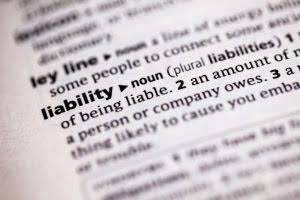
Mismanagement of contra-revenue accounts can lead to inaccuracies in financial reporting and affect a company’s profitability. In summary, the contra revenue account plays a crucial role in bookkeeping by mitigating unforeseen losses and clearly understanding a business’s financial landscape. If this aligns with your business model, it’s advisable to document each refund, return, or discount in your contra revenue account. This practice aids in gaining a clearer perspective on the distinctions between your gross and net revenue. Contra accounts are used to reduce the value of the original account directly to keep financial accounting records clean. Another type of contra account is known as “contra revenue,” which is used to adjust gross revenue to calculate net revenue, i.e. the “final” revenue figure listed on the income statement.
Contra liability account example
- Whether in-house or outsourced, utilising dedicated accounting and bookkeeping teams ensures accurate recording of contra revenue.
- It also shows the carrying (net) amount of $19,000, which you report to your firm’s balance sheet.
- However, it’s important to keep in mind that you can create any contra account you want to more clearly describe your business — this is not an exhaustive or definitive list.
- The two most common contra accounts on a balance are accumulated depreciation and the allowance for doubtful debts.
- Sometimes, we have an ancillary balance whose normal balance is the same as that of the parent account.
- The accumulated depreciation amount shows how much depreciation expense has been charged against an asset.
- In a report, layering on that additional context can be easy, but in a general ledger, you have few options for conveying nuance and subtlety.
The main advantage of using separate contra revenue accounts is that each one provides targeted information about the individual deductions taken from sales. Since each of these deductions directly reduces your profits, it makes sense to research them in detail, to see if there are any actions that can be taken to reduce the number of deductions. For example, this analysis might indicate that your business has product quality problems or servicing issues that can be corrected. In addition, you can examine the impact of sales discounts on increases in sales, to see if it makes sense to continue offering discounts in order to boost profits.

What are the Five Types of Contra Accounts?

Similarly, if the parent account lists entries as debits, the contra account will appear as a credit. When considering all of the money currently owed to your business that’s recorded in your Accounts Receivable (A/R) line item as an existing asset, there’s a good chance that not all of those customers are going to pay you back in full. To compensate for those potential deadbeat customers, you can use a Bad Debts account to serve as a contra for your A/R. As evident from the table below, each contra account has a parent account whose normal balance is often exactly opposite of the normal balance of the relevant contra account.
Everything You Need To Master Financial Modeling

In other words, its expected balance is contrary to—or opposite of—the usual credit balance in a revenue account. Allowance for uncollectible accounts, or allowance for doubtful accounts, is one of the most contra revenue account common contra current asset accounts. The dollar balance in the allowance for uncollectible accounts is the amount you don’t expect to collect, and this offsets the amount you report in accounts receivable.
In the realm of accounting, contra revenue plays a significant role in accurately reflecting a company’s financial performance. It is a concept that may seem complex at first, but with a clear understanding, businesses can utilize contra revenue to provide a more accurate representation of their revenue streams. In this blog post, we will explore what contra revenue is, its purpose, how it affects financial statements, and how businesses can effectively use it. These deductions, which come in the form of sales returns, allowances, and discounts, are not expenses but adjustments that lower the total sales on your income statement.

The credit balance in the liability account Bonds Payable minus the debit balances in the contra-liability accounts Discount on Bonds Payable and Bond Issue Costs results in the carrying value or book value of the bonds. The credit balance in Notes Payable minus the debit balances in Discount on Notes Payable is the carrying value or book value of the notes payable. Sales returns, sales allowance and sale discounts are different examples of contra revenue accounts. Contra accounts such as these have a debit balance and are deducted from the total amount of a company’s revenue.

